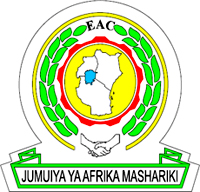
In order to promote public education and public safety, equal justice for all, a better informed citizenry, the rule of law, world trade and world peace, this legal document is hereby made available on a noncommercial basis, as it is the right of all humans to know and speak the laws that govern them.

EAS 142: 2000
ICS 67.160
EAST AFRICAN COMMUNITY
© EAC 2000
First Edition 2000
iiiDevelopment of the East African Standards has been necessitated by the need for harmonizing requirements governing quality of products and services in the East African Community. It is envisaged that through harmonized standardization, trade barriers that are encountered when goods and services are exchanged within the Community will be removed.
In order to achieve this objective, the Community established an East African Standards Committee mandated to develop and issue East African Standards.
The Committee is composed of representatives of the National Standards Bodies in Partner States, together with the representatives from the private sectors and consumer organizations. Draft East African Standards are circulated to stakeholders through the National Standards Bodies in the Partner States. The comments received are discussed and incorporated before finalization of standards, in accordance with the procedures of the Community.
East African Standards are subject to review, to keep pace with technological advances. Users of the East African Standards are therefore expected to ensure that they always have the latest versions of the standards they are implementing.
© East African Community 2000 – All rights reserved*
East African Community
P.O. Box 1096
Arusha
Tanzania
Tel: 255 27 2504253/8
Fax: 255 27 2504255
E-mail: eac@eachq.org
Web: www.eachq.org
* © 2000 EAC — All rights of exploitation of any form and by any means reserved worldwide for EAC Partner States’ NSBs
ivVodka — Specification
This East African Standard prescribes the requirements and methods of test for vodka.
The following referenced documents are indispensable for the application of this document. For dated references, only the edition cited applies. For undated references, the latest edition of the referenced document (including any amendments) applies.
EAS 12, Standard specification for drinking (potable) water
EAS 38, Standard specification for the labelling of pre-packaged foods
EAS 39, Code of practice for hygiene for food and drink manufacturing industries
EAS 104, Alcoholic beverages — Methods of sampling and test
EAS 144, Neutral spirit – Specification
For the purposes of this standard vodka shall be the potable alcoholic beverage obtained by the treatment of grain, potato, molasses spirit or spirit from any other fermentable carbohydrate source with charcoal or activated carbon so as to render the product without distinctive character, aroma or taste; but may be flavoured and/or coloured in accordance with Good Manufacturing Practice (GMP).
Vodka shall comply with the quality requirements indicated as follows:
Vodka shall be free from any sediment or suspended matter.
The ethyl alcohol content in vodka shall not be less than 37.5 % by volume at 20 °C when determined in accordance with EAS 104, Alcoholic beverages — Methods of sampling and test.
The maximum limits in milligrams per litre for trace elements in the product shall comply with the requirements in Table 1.
1| Contaminant, mg/L | Maximum Limit |
|---|---|
| Arsenic | 0.1 |
| Copper | 2.0 |
| Iron | 1.5 |
| Lead | 0.1 |
| Zinc | 0.1 |
Vodka shall comply with the compositional requirements indicated in Table 2
| Sl No. | Characteristic | Requirement |
|---|---|---|
| i | Ethyl alcohol content, % (v/v), min. | 37.5 |
| ii | Total solids, g/100 mL, max | 0.005 |
| iii | Methyl alcohol, mg/L, max. | 50 |
| iv | Volatile acids as acetic acid, g/100 L of absolute alcohol, max. | 2 |
| v | Esters as ethyl acetate, g/100 L of absolute alcohol, max | 10 |
| vi | Higher alcohol as amyl alcohol, % (v/v) of absolute alcohol, max. | 0.03 |
| vii | Aldehydes as acetaldehyde, g/100 L of absolute alcohol, max. | 2 |
| viii | Furfural, g/100 L of absolute alcohol, max. | NIL |
The degree of cleanliness in respect of containers, premises of manufacture, persons engaged in the handling of the product and equipment shall meet the requirements of the EAS 39 Code of practice for hygiene for food and drink manufacturing industries.
In the filling of the container, the contents of the products shall occupy not less than 90 % of the total volume capacity of the container.
2Vodka shall be packaged in food grade containers, which protect the product from damage without reacting with the product.
The product shall be legibly and indelibly labelled in compliance with the requirements of the EAS 38 Standard specification for the labelling of pre-packaged foods. In addition the following information shall appear legibly on each container:
Sampling and testing shall be carried out in accordance with EAS 104 Alcoholic beverages — Methods of sampling and test.
3 4